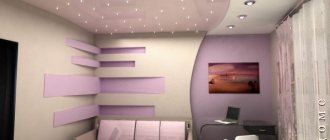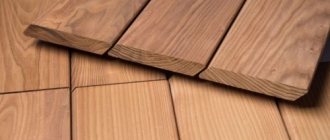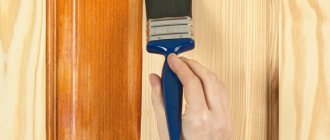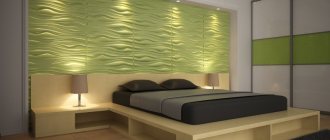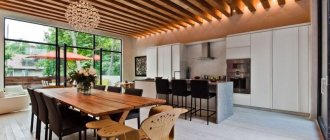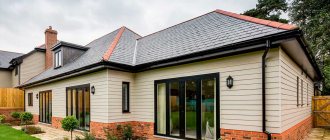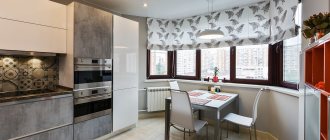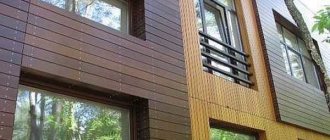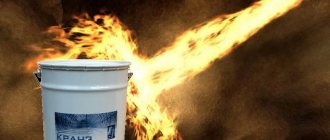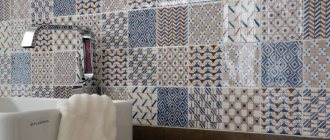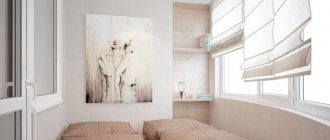Barn board
For those who want to fill the interior with a breath of antiquity, the modern market offers barn boards. The idea of reusing wood is not new at all. Already 15 years ago on the market you could find cabinets, doors, frames and other interior items made from time-worn boards. Such unusual raw materials were collected during the demolition of old wooden houses, piers, barns, etc. This is why the material got its name.
The reader may have a completely logical question: why, in principle, buy recyclable materials if you can age a “young” board? The reason is the amazing beauty of wood with history. Over many decades (and even centuries) of use, time leaves many imprints on it, turning it into a real antique. Darkening, cracks, woodworm passages, paint residues, warehouse stamps - all this gives the barn board a unique charm. No stains, paints or brushing technologies can achieve this effect. No matter how you process a freshly planed board, it will still remain a new piece.
Another reasonable concern: How durable is a board that has lasted 30, 50, or 300 years? Will it fall apart when cutting and hammering nails? As hard as it may be to believe, wood can remain strong for many centuries. Proof of this is the piles on which medieval castles stand to this day. In those distant times there was no need to rush. Houses were built slowly, allowing the wood to dry naturally. Since the moisture was released gradually, the material did not deform (which happens today when drying in ovens). And after a few years, builders were provided with a stable and durable material that no longer “performed” with fluctuations in temperature and humidity.
Barn board has stood the test of time and is much stronger and more stable than modern lumber.
So, where can you use time-tested wood? First of all, in interior decoration. Note that the floor will require lumber with a thickness of at least 50 mm. For walls and ceilings, the requirements are not so stringent. By the way, false ceiling beams made from old wood are very popular. And if you wish, you can order a mosaic from this amazing material.
Of course, barn wood is great for making furniture. And not only cabinets, cabinets and other complex products. A simple shelving unit with “antique” shelves will become a real decoration for your office or living room. The same goes for mantels, mirror frames and other decorative items.
External walls can also be covered with barn boards, but such a finish will be truly “golden”. The first, main and, perhaps, only drawback of this amazing material is its high price. One square meter costs an average of 2000-5000 rubles. And the cost of products made from centuries-old wood amounts to tens, and sometimes hundreds of thousands. However, it is not necessary to cover the entire house with antique wood from roof to base. Sometimes a few boards are enough to turn a faceless modern interior made of plasterboard, glass and plastic into a cozy home with history.
Read more in the material “Old School”
2
Planken
Planken is a board planed on four sides. Its long edge can be straight (with or without a tongue-and-groove system) or beveled at an angle of 35-70º. This type of cladding board is used both inside and outside. It can be mounted vertically, horizontally or diagonally.
The raw material for the production of planken is pine, spruce, linden, beech, oak, etc. wood. The most durable board is made from larch, but this species is quite hard and therefore difficult to process. In addition, it is by no means cheap.
By the way, planken, in principle, costs more than conventional lining, mainly due to the high labor intensity of production. But these costs are recouped (at least partially) due to the fact that the board does not require mechanical post-processing. After covering, the front surface must be covered with a protective preparation (paint, oil wax or tinted antiseptic) and, in fact, that’s all.
Planken with a locking system is not suitable for cladding facades. Under the influence of atmospheric moisture, wood inevitably swells, and the tenons simply tear the grooves
The width of a standard lamella can be from 7 to 14 cm, and the maximum length reaches 6 m. As for thickness, there are only three options: 1, 1.5 or 2 cm. Obviously, the thickest board should be used for cladding facades.
Scandinavian board
Scandinavian board is essentially the same lining. The only difference is that it is planed only on three sides. The fourth, the front one, is not processed after cutting, which means the surface remains rough. If you run your hand over the board, you get the impression that you are stroking it against the grain. In this case, the paint is absorbed into the open pores and lasts much longer than on a board brought to a mirror smoothness.
This seemingly simple technique significantly extends the life of the paint layer. Manufacturers of Swedish boards who produce already painted material provide a 5-year guarantee on the coating. But its predicted lifespan is much longer.
Under favorable conditions, painted Swedish boards retain their original appearance for eight years or even more.
To avoid having to return to painting work for many years, you need to strictly follow the technology. First, the lumber is covered with primer, and then with paint in two layers. Some manufacturers offer untreated boards, but this should alert the buyer. The primer must be applied no later than 60 hours after cutting, otherwise the porous surface will absorb too much moisture, which will inevitably create problems.
It would be wiser to buy already primed Scandinavian boards and immediately begin covering the facades. The dyeing process can be postponed for a whole year. The impregnation contains potent antiseptics that protect vulnerable wood from fungus, ultraviolet radiation and harmful insects. By the way, the soil can be white, gray and red. It looks quite impressive in itself, so the walls will not scream with all their appearance about the need for painting.
Purchasing a primed and painted board seems even more logical. First of all, because it eliminates long and labor-intensive facade work. But it's not only that. If you paint the cladding on the facade, the locking joints will remain untreated, because it will be impossible to reach them with a brush. The tree will “play”, shrinking in the cold and swelling in the heat. Over time, the slats will move apart, at least a little, and unpainted stripes will appear on the walls.
Of course, you can go over them with a brush, but let us remind you that the very essence of the Swedish board technology is to paint the facades as little as possible. Factory processing of lumber involves painting the locks, which means that the problem of a striped facade will not arise.
Read more in the material “Against fur”
3
Design Tips
If you want to use old boards to decorate your house or apartment, you should consider some recommendations:
- Using wood when decorating a room is, of course, good, but it is always important to know when to stop. The boards should not attract too much attention, blending with the interior rather than standing out from it. They should not be too conspicuous, since the point of using them is to create a specific style. Everything should be in harmony, be organic. To do this, you should also carefully consider the choice of thickness, dimensions, color or even pattern of the material.
- Professional designers recommend finishing not the entire space with old boards, but only a certain part of it. It is preferable to decorate part of the territory, and choose additional material for the rest. After all, if there is too much wood, it will seem that the room is littered with rubbish.
- In order not to bring gloom into the environment, it is necessary to use high-quality textiles and add some modern finishing materials.
It is recommended to use brickwork when finishing the walls if the floor is lined with old boards. They complement each other delightfully, so the combination will look great indoors.
Based on these tips, try to find a balance when decorating your home. Find your own style, remembering to follow the recommendations of experienced professionals.
Unedged board
An unedged board is distinguished by the presence of wane (bark) along the unsawed longitudinal edges. That is, unlike edged, it is not calibrated in width. It is made from the same raw materials as edged lumber (pine, spruce, fir, larch, oak, etc.), so in terms of its physical and mechanical properties it is in no way inferior to it. But it looks, of course, less attractive, but it costs noticeably less. In this case, before use, the board will have to be cleared of bark in order to remove along with it spores and pest larvae, which can quickly turn a healthy body of wood into dust.
Unedged board of the 1st grade (category B) should not have signs of putrefaction, cracks, curvatures and other defects that reduce the structural strength of the material. Having the same load-bearing capacity as an edged board, it will allow you to save money during construction where “appearance” does not play a role. First of all, these are the hidden strength elements of buildings - frames, subfloors, roof truss system, floors, lathing. Unedged boards are also used for the construction of scaffolding, sheds, stairs, temporary fences and decking; walkways, sides of high beds, and compost bins are made from it.
However, if you approach the task creatively, the aesthetic imperfections of an unedged board can be turned into a great advantage. The very “irregularity” of its shape, the natural curvature of the edges, being deliberately emphasized, can create an original decorative effect. It will be especially expressive on large planes - for example, such as spans of fences (by the way, category B boards are classified as fence boards, in contrast to class A material - carpentry, which does not have knots or other defects and is used for the manufacture of floor coverings, furniture, window frames, etc.). Of course, if you simply install the boards vertically with a slight indentation from each other, like a picket fence, then such a fence will hardly decorate the area and will only be suitable as a temporary option. The most interesting look are fences in which the boards are arranged horizontally and overlapped, either at an angle to each other (like blinds), or staggered - alternately on the front and back sides of the posts. Moreover, the gaps between the elements in the case of unedged boards turn out to be different in size, which becomes another highlight of the design.
All load-bearing and rough wooden structures must be subjected to deep impregnation with fire-retardant compounds, since they will be hidden under the cladding and it will no longer be possible to re-treat them
Unedged boards look great in cladding facades and walls of premises (in particular, baths), as filling openings in gazebos and terrace fencing, in pieces of garden furniture and elements of landscape design. This decoration carries a touch of “rough” rustic style, naturalness, and brings into the interior an atmosphere of antiquity or, as they say, “a house with history.” To reinforce this message, the material is brushed. Of course, this requires both effort and time, but the result is worth it. For example, you can treat the surface of the board using a grinder and a brush. Removing the soft fibers of the wood will reveal its pattern, making it more voluminous. Sometimes, in order to add age to the board, they even specially imitate the moves left by the bark beetle. Then the material is ground to remove burrs, tinted and rubbed with fine sandpaper. Finally, the board is coated with varnish, oil or wax, depending on future operating conditions.
For decorative purposes, you can also use unedged board of the 2nd grade (category C), which is not used as a structural material and is used for the manufacture of building supports, formwork, pallets, etc. The permissible volume of wane for such a board is up to 10 % of its area, but, as you know, aesthetic defects are the same advantages, the main thing is to present them correctly. After debarking and appropriate processing, the material can be used to decorate the head of a well, porch, gates and doors, to create original garden and interior decor.
Read more in the material “Top Grade!”
4
House cladding rules
Sheathing the house with herringbone boards is carried out after preliminary marking.
It is necessary to create a frame on which the outer board will later be attached. It's best to use a regular hammer rather than a nail gun. Of course, the operating time will increase significantly, but this particular tool will provide the required quality.
Sometimes self-tapping screws are used as fasteners for boards.
They are attached using a screwdriver. The work will be done quickly. But a number of boards that are located inside will have to be hammered only with nails, the length of which is at least 80 mm.
Boards need to be prepared in advance:
- Dry thoroughly. Treat with antiseptic.
When covering, the front side of the board is exposed outward, and the bend is directed upward.
Source https://hvrax.ru
Burnt board
Many centuries ago, our ancestors noticed that if you burn a piece of wood a little, it will become stronger. This technique, called Shou Sugi Ban (“cedar languishing”), is believed to have originated in Japan. Although there is quite reliable evidence that wood was processed this way on all continents, including ours. In Rus', pile pillars, joists, floorboards, wall cladding and roofing were protected by firing (smoking). Today, the ancient method of heat treatment of wood is not only not forgotten, but is becoming more and more popular. The development of technology has made it possible to bring it to perfection. The wood is burned using a gas torch/blowtorch or kept in a kiln, resulting in a new, improved material.
Under the influence of high temperatures, all possible “seeds” of decay die. Wood sugar burns out, making the wood unappetizing to wood-boring beetles and other harmful microorganisms. The melted resin closes the pores of the material, making it less hygroscopic, or, in simple words, no longer “afraid” of water.
As strange as it may sound, charred wood becomes fireproof. It is almost impossible to re-ignite an already burnt board.
During the smoking process, the wood becomes amazingly beautiful. It darkens, becoming dark chocolate or impenetrable black, and acquires a noble silvery sheen that cannot be achieved by any paints.
Of course, such interesting characteristics attracted the attention of craftsmen from various fields. Today, charred wood is used everywhere. It shows itself perfectly both in the decoration of houses (floorboards, cladding of walls, ceilings, facades and roofs) and in landscape design (fences, pergolas, gazebos, greenhouses and even framing beds). Another area of application is the furniture industry. The exquisite black color with a pearlescent sheen has made Shou Sugi Ban wood a favorite material for designers creating luxury interior items.
The main advantage of Shou Sugi Ban technology is its accessibility. Almost anyone can do this job. A gas torch or blowtorch and at least a little experience with these tools are enough.
But before you start firing, the wood needs to be prepared. The surface must be smooth and clean. If there are traces of old paint, oils and other contaminants on the board, they must be removed, otherwise after heat treatment they will turn into indelible stains.
It is very important to check the moisture content of the wood. The moisture concentration in the material should not exceed 13-15%, otherwise, after firing, spots and stains will appear on the surface of the board.
Freshly planed wood is best suited for firing. If the material has been stored for a long time, has darkened and become porous, it must be sanded before heat treatment.
When processing, the boards are touched with the edge of the torch, holding it perpendicular to the surface. It is very important to ensure that the wood chars evenly, that is, the change in tone is uniform along the entire length of the board.
After firing, the surface is moistened with water from a spray bottle, wiped dry, and after the wood has completely cooled, the carbon deposits are removed with a brush. If you take a tool with metal bristles rather than synthetic ones, you can at the same time age (brush) the wood, making its texture clearer and more expressive.
Burnt wood does not need to be impregnated with any protective agents. But if you want to maximize the life of a material that is used in harsh conditions (for example, on facades), you can resort to “chemistry”. There are quite a few options: linseed and hemp oil, nitrocellulose or urea-formaldehyde varnish, synthetic wax. But the easiest way is to purchase a special oil-wax composition for impregnating wood at a hardware store.
Read more in the material “Burn it with fire!”
5
Disadvantages of using slats
Unfortunately, even such a universal material is not without its drawbacks:
- Dust often accumulates between adjacent elements, which can be difficult to get rid of.
- Purchasing a low-quality product can lead to rapid deterioration of the finishing material. The reason for this may be the harmful effects of moisture, wood rotting or the development of pathogenic fungi.
- Wood is not used in a number of interior styles, for example, high-tech.
You should always remember that the slatted design will visually reduce the room. For this reason, wooden slats are not suitable for small bedrooms, children's rooms, and living rooms.
Thermal board
Heat-treated wood, unlike regular wood, is almost resistant to water, heat, cold and insect pests. This material can be used for finishing facades, cladding steam rooms, designing terraces and garden paths. In fact, the scope of its application is limited only by the homeowner’s imagination
During the production process, wood is treated under pressure at high temperatures, introducing water vapor into the chamber to prevent combustion. At the same time, the moisture content of the material is reduced to 4%, which is the optimal indicator. But that's not the main thing. During processing, wood sugars (polysaccharides) are decomposed at the molecular level, and lignin is also destroyed. This makes the tree almost immune to fungus and harmful insects. In addition, the density of the surface layer increases noticeably.
The result of heat treatment is a dense, strong, durable board that will last at least three times longer than one that has not passed the “heat and steam” test.
In addition, heat treatment also decorates the wood. The pattern of the fibers appears, the color becomes deeper and more saturated (deciduous species acquire a brown tint, and coniferous species become honey-colored). In general, we can say that the material looks more expensive. However, it's not just looks. Its price doubles on average.
Where can you use thermowood?
Flooring (parquet and solid boards). Heat-treated wood is dimensional stable. With sharp fluctuations in temperature and humidity, it almost does not change its geometric dimensions, that is, it does not dry out or swell. This makes it an excellent flooring material. This is especially true for dachas that are not heated in winter. When, with the onset of spring, the owners come and warm up the rooms, ordinary parquet may not withstand a sudden change in the “weather in the house” and may crack. This will not happen with heat-treated ones.
Steam room finishing. The thermal wood production process eliminates the use of any chemicals, which means that when heated it will not emit toxic fumes. This is an absolutely safe material from an environmental point of view, which can be used both for cladding bath walls and for shelves. During operation, thermal wood absorbs moisture and releases it almost completely, almost to a dry state, and therefore fungi and bacteria do not multiply on it. And another weighty argument in favor is a long lifespan. This is due to the fact that the thermal board can be in a humid environment without noticeable damage. Even if you put it in water for a long time, the importance level will only rise to 8%.
Covering for terraces and areas around the pool. As mentioned above, thermowood almost does not absorb moisture and dries very quickly. But there is another reason to use this material for terraces and areas around the pool. Treated wood remains warm and pleasant to the touch, but even under the hottest rays of the sun it does not get so hot that you could get burned. It is always pleasant to walk on such paving barefoot.
Facade cladding. Thermowood is actively used for external wall cladding. Even in its untreated form, it will last a very long time, but manufacturers recommend using protective impregnations to further increase its lifespan. Since dense material has poor absorption, not all drugs are suitable for it. “Chemistry” on an organic basis practically does not penetrate inside. Natural oil-wax compositions with a UV filter performed best.
Read more in the material “Specially Hardened Breed”
6
Approximate cost of material
The table below shows the approximate cost of wood from which planed finishing material can be produced.
| Hardwood: | Cost per m2: | Coniferous wood: | Cost per m2: |
| Linden: | From 700 rub. | Larch | From 750 rub. |
| Alder: | From 900 rub. | Cedar | From 550 rub. |
| Oak: | From 3000 rub. | Pine or spruce | From 350 rub. |
| Ash: | From 1500 rub. | ||
| Aspen: | From 1200 rub. |
flexible tree
The idea of a flexible tree, simple as all ingenious things, belongs to the German designer Elisa Strozyk. While studying at London's Central Saint Martins College of Art and Design, she began to think about how waste from the wood industry could be used. Or rather, a small carpentry workshop that was located nearby. The student collected pieces of plywood “to throw away” in the workshop and, using laser cutting services, turned them into equilateral triangles. After which all that remained was to glue them onto a durable fabric sheet.
The result, which, by the way, became a thesis work and brought fame to the author, exceeded the wildest expectations. Essentially, the result is a tree that can be bent, twisted and folded in any direction.
A simple and elegant idea became the starting point for a new direction in design. Other designers have appeared with their own take on this amazing material. For example, Wood-Skin places spot lighting in the seams between the boards, and in addition to the actual wooden triangles, it uses parts made of ceramics, metal, plastic and even stone. The Designboom company cuts out diamonds rather than triangles, making the canvas look like scales.
Wooden textiles, just like regular wood, can be stained, tinted, or painted.
Another obvious advantage of the material is its accessibility, because it is easy to make with your own hands. You just need to cut thin boards or plywood into triangles, squares or diamonds and glue them onto the fabric. Almost everyone can do this task. If you don’t want to do figure sawing, any workshop that works with wood will be happy to take on this work. Finally, you can purchase a ready-made wooden textile product, although such a solution can no longer be called economically profitable.
How can you use this amazing material?
The first is the carpet. Let’s imagine that the tiled floor covering turned out to be too cold, and you don’t want to remove it to install a heated floor system. A covering made of thin wooden planks will be an excellent way out. In fact, it will be something like parquet. Only if necessary, it can be removed and put in another place.
Another option is wall decor. Real wooden mosaic tiles are expensive and difficult to install. A wooden carpet will look almost the same, but will cost much less. By the way, you can curtain the window with it. Why not? A dense, light-transmitting canvas will be an excellent alternative to a heavy, dusty curtain.
lampshades, tablecloths, furniture upholstery and even handbags made from wooden textiles In short, the options for using wooden textiles are limited only by the owner’s imagination. And if the natural color of a natural material seems too boring, you can change it with stain or paint.
Read more in the material “More plastic”
7
Interior finishing options
For each of the living rooms there are many interesting options for the arrangement of wooden slats:
- In the dining area, this can be an original partition to divide the kitchen into clean and work areas.
- Also, within the dining room, one of the walls is finished using slats located along the vertical axis.
- In the bedroom, using a slatted structure, you can decorate the wall above the head of the bed.
A similar composition looks very interesting in a residential attic, where the slats have an inclined direction. Or you can decorate the wall along which the steps to the second floor run.
